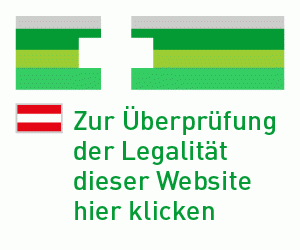European Commission launches logo for online pharmacies to protect patients from falsified medicines
News
Corporate
Today the European Commission has introduced a logo that will allow patients to identify authorised online pharmacies providing authentic medicines. The logo will appear on the websites of legally operating online pharmacies in the European Union (EU) and will link to the national competent authority websites where all legally operating online pharmacies in their respective countries will be listed.

The establishment of this logo for online pharmacies has been introduced by the new Directive on falsified medicines (Directive 2011/62/EU) which came into force in January 2013. This piece of legislation amends Directive 2001/83/EC on the Community code relating to medicinal products for human use.
Falsified medicines are fake medicines that pass themselves off as real authorised medicines and can have a false representation of their identity (composition, labelling and name), source (manufacturer or country of origin) or history (accompanying records and documents). They can be ineffective or harmful.
"When buying medicines online, consumers must be aware that unless they buy from legally-operating online medicine suppliers, they run a risk of buying medicines that are falsified. The Commission has established a common logo for online pharmacies so consumers can stay safe," explained Tonio Borg, the European Commissioner for Health.
The Regulation establishing the new logo should enter into force by the end of July 2014 and Member States have one year to prepare for its application. National regulatory authorities in the EU will list on their websites all legally-operating online pharmacies in their country and other legally-authorised retailers of medicines. The European Medicines Agency (EMA) website will provide links to these lists.
The Directive on falsified medicines also foresees that Member States conduct campaigns to raise awareness of the logo and the dangers of falsified medicines.
The phenomenon of falsified medicines is on the increase globally, with more and more medicines now being falsified. These include expensive medicines, such as anti-cancer medicines, and medicines in high demand, such as antivirals. Although the EU has a strong regulatory system, there is still a threat that falsified medicines come into circulation in the EU. However, the risk to patients in the EU is very low.
The EU Directive on falsified medicines aims to prevent falsified medicines entering the legal supply chain and reaching patients. It strengthens existing controls and introduces new measures. The establishment of a logo for online pharmacies is a new milestone in the implementation of the Directive. Last year, the EMA upgraded its inspections database so that it contains information on good distribution practice (GDP) in addition to good manufacturing practice (GMP) certificates; it is now called the EudraGMDP database. In July 2013, the written confirmations from competent authorities outside the EU were introduced to guarantee GMP standards at manufacturing sites for active substances that are imported into the EU.